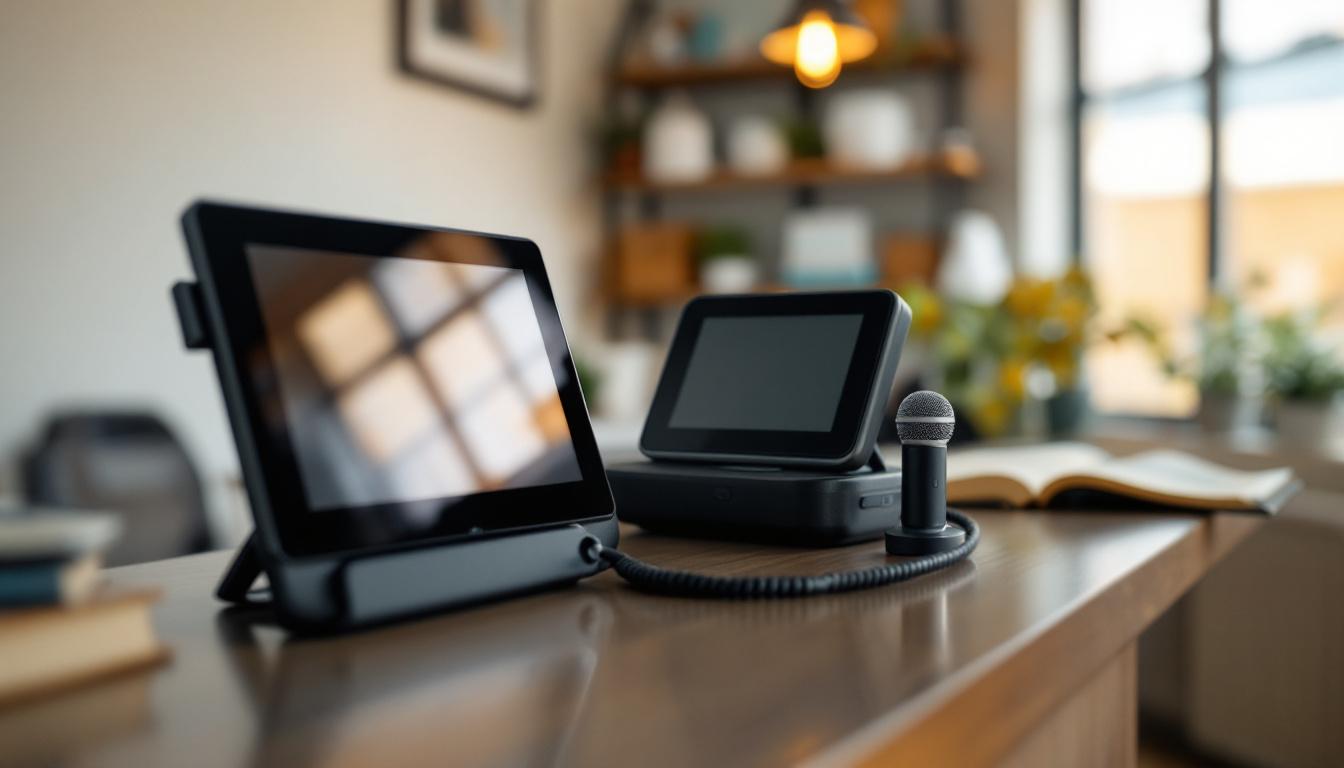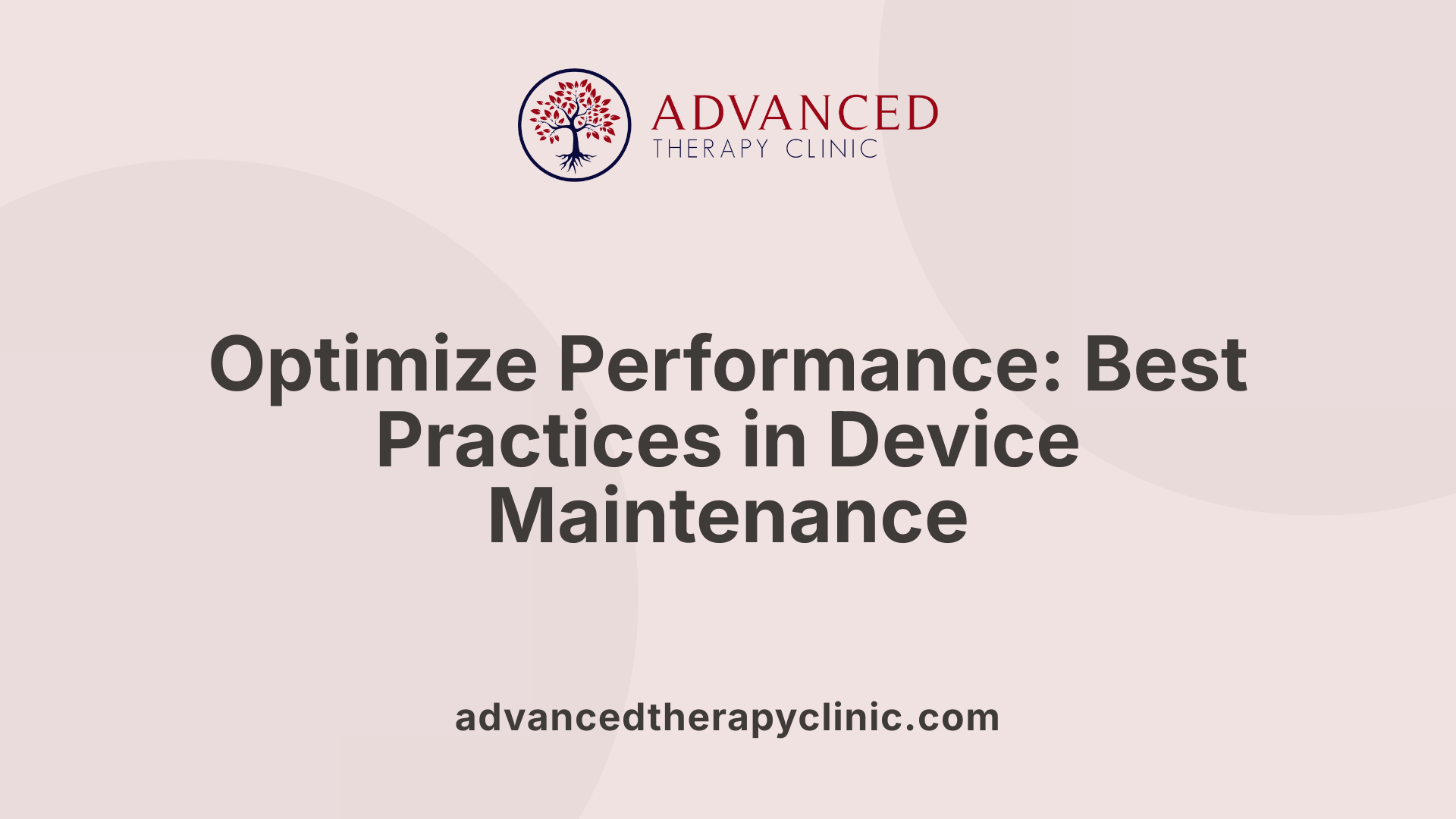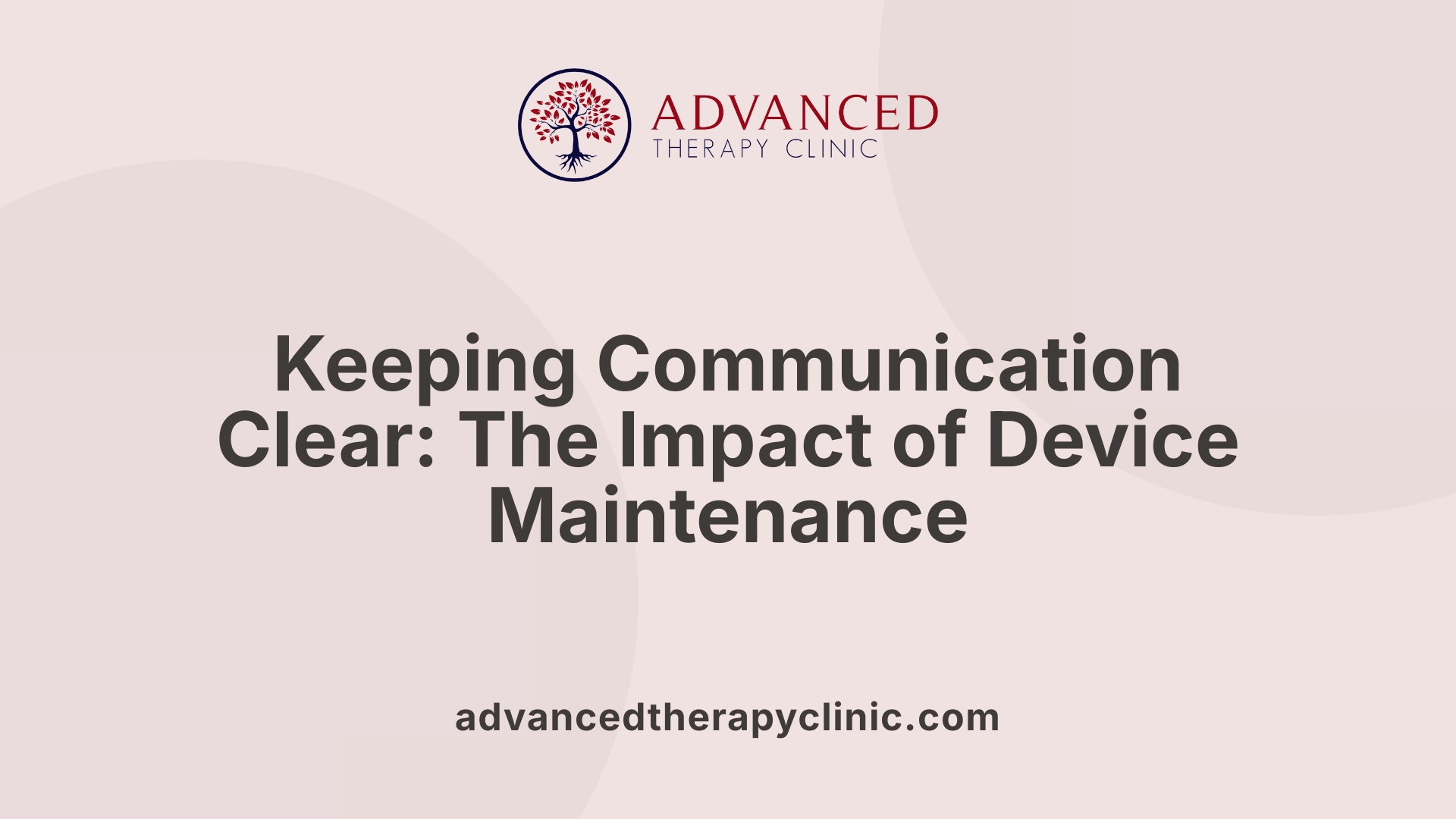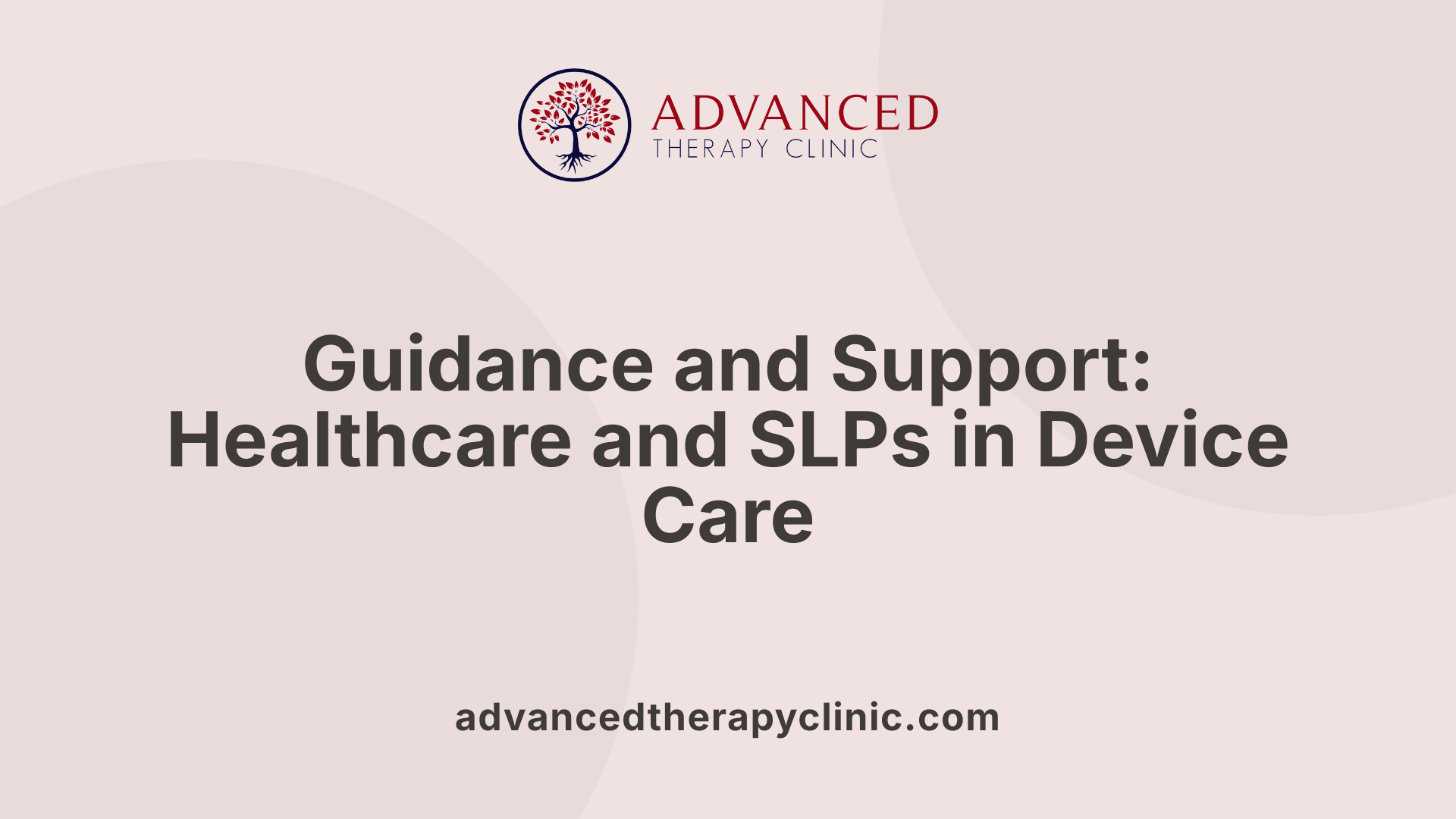The Importance of Speech Device Maintenance for Effective Communication


Understanding the Critical Role of Maintenance in Speech Device Effectiveness
Effective communication is a fundamental human right, vital for social interaction, academic achievement, and quality of life. For individuals with speech and language impairments, augmentative and alternative communication (AAC) devices serve as essential tools, enabling expression and participation. However, the efficacy of these devices heavily depends on regular and proper maintenance. This article explores the importance of speech device upkeep, best practices for maintenance, and the pivotal role of healthcare professionals in supporting sustained communication success.
Overview of Augmentative and Alternative Communication Devices
What are augmentative and alternative communication (AAC) devices and how are they used?
Augmentative and Alternative Communication (AAC) devices are tools that help individuals with speech or language difficulties communicate more effectively. These devices can take many forms, including speech-generating devices (SGDs), communication boards, and mobile apps designed for communication.
AAC devices are categorized based on their complexity and technology, ranging from no-tech options like gestures or facial expressions, to low-tech tools such as picture exchange systems or written notes, to high-tech systems like tablets with speech-generating software.
No-tech AAC methods include basic gestures, sign language, or facial expressions and are often used in everyday interactions. Low-tech options involve picture boards, communication books, or written messages that support communication through visual symbols.
High-tech AAC devices incorporate electronic systems—such as speech-generating tablets, smartphones, or specialized communication apps—that produce spoken output using synthesized speech. These are particularly useful for individuals with severe speech impairments, providing a more natural-sounding voice and extensive vocabulary options.
Speech-language pathologists play a vital role in evaluating individual needs, selecting appropriate AAC tools, and training users and their families. Proper support and ongoing device maintenance are critical for the effectiveness of AAC, ensuring that users can participate fully in social, educational, and daily activities.
AAC promotes not only basic communication but also supports language development, social interaction, independence, and emotional well-being. By giving individuals a voice, these devices help overcome communication barriers, enhance quality of life, and foster inclusion in all aspects of life.
Populations benefiting from AAC
Many groups across the lifespan benefit from AAC devices, especially those with conditions affecting speech and language. These include children with autism spectrum disorder, cerebral palsy, Down syndrome, and genetic syndromes. Adults recovering from strokes, traumatic brain injuries, or living with progressive neurological diseases like ALS also rely on AAC to communicate.
In early childhood, AAC facilitates language learning and social skills, while in adulthood, it helps maintain independence and participate actively in work and social contexts. The adaptability of AAC methods means they can be tailored to diverse physical and cognitive needs, ensuring that everyone has access to effective communication.
Overall, AAC is a versatile, vital resource that fosters expression, connection, and inclusion, making it an essential component in the support for individuals with complex communication needs.
The Significance of Maintaining Speech Devices for Communication Effectiveness
What is the importance of maintaining speech devices for effective communication?
Maintaining speech devices is fundamental to ensuring they work properly and deliver clear, reliable output. When devices are well cared for, users can express themselves accurately and with confidence. This consistency helps improve social interactions, supports independence, and encourages regular use.
Proper maintenance involves routine checks, troubleshooting, and updating the device software or hardware as needed. Regular servicing can prevent unexpected breakdowns that might hinder communication, thereby reducing frustration for users and their communication partners.
Reliability and clarity in speech output are crucial. If a device produces garbled or inconsistent speech due to poor maintenance, it can lead to misunderstandings or diminished trust in the device. Conversely, a well-maintained device supports effective participation in conversations, educational activities, and daily routines.
Neglecting maintenance can have serious consequences. A malfunctioning device may become unusable or produce inaccurate messages, which can impair the user’s ability to convey needs and ideas. This can lead to social isolation, decreased self-esteem, and increased dependence on others.
Keeping speech devices in good condition also extends their lifespan, making them a more sustainable investment. It ensures that users can rely on their communication aids over time without frequent replacements.
In summary, diligent upkeep of speech-generating devices and other AAC tools is essential. It maximizes their effectiveness, supports effective human communication as a fundamental right, and enhances quality of life for individuals with communication challenges.
Best Practices for Speech Device Upkeep

What are best practices for speech device upkeep to ensure proper functioning?
Maintaining speech-generating devices (SGDs) properly is essential for ensuring reliable communication. Regular cleaning begins with wiping the device's surface using a soft, lint-free cloth. For added protection, users should consider applying a screen protector to prevent scratches and shield against moisture.
Keeping the device’s software current is another vital step. Connect the device to WiFi frequently to download and install updates, which can improve performance and security. Routine software management ensures the device runs smoothly and benefits from the latest features.
Battery health directly impacts device usability. Always recharge using the recommended medical-grade chargers, and avoid letting the battery fully deplete, as this can reduce its lifespan. Regularly check battery levels and replace batteries when necessary to maintain consistent operation.
Physical protection is equally important. Use a durable case or bumper suited for the device to prevent damage from accidental drops or impacts. Store the device in a cool, dry place, away from direct sunlight, heat sources, or liquids that could cause spills.
Hardware components, such as microphone covers, straps, and connection ports, should be periodically inspected for wear or damage. Performing troubleshooting steps, updating firmware, or seeking professional calibration can resolve hardware issues early.
Supporting the device’s longevity also involves training users, family members, and communication partners on proper handling, use, and maintenance routines. Regular support and education help sustain effective communication and reduce technical difficulties.
Following these best practices ensures that speech devices remain functional, reliable, and ready to support effective communication for individuals with speech and language needs.
Impact of Maintenance on Communication Outcomes

How does device maintenance impact communication effectiveness?
Proper maintenance of communication devices plays a crucial role in ensuring effective interaction for individuals relying on augmentative and alternative communication (AAC) tools. When devices such as speech-generating devices (SGDs) are kept in good condition, they reliably produce clear and accurate speech output, which is essential for conveying messages correctly and efficiently.
Regular cleaning and disinfection not only keep devices hygienic but also prevent malfunctions that could obstruct communication. Troubleshooting and software updates address technical issues that might otherwise cause delays or breakdowns during conversations. These proactive measures reduce the risk of device failure at critical moments, fostering consistent and uninterrupted communication.
Customization is another vital aspect. Adjusting device settings, selecting appropriate vocabulary, and aligning features with the user’s needs maximize ease of use and message clarity. Engaging users in this process encourages familiarity and confidence, which can lead to more spontaneous and effective communication.
In environments like healthcare facilities or classrooms, regular device maintenance ensures safety, hygiene, and functionality—supporting seamless exchanges of information. Overall, diligent upkeep of communication technology directly enhances message accuracy, reduces frustrations, and promotes meaningful social interactions.
Strategies for Maintaining Speech-Generating Devices (SGDs)

What strategies are recommended for the proper maintenance of speech-generating devices (SGDs)?
Maintaining SGDs effectively is essential to ensure they function properly and support the user’s communication needs. Regular routines such as scheduled cleaning, updating software, and managing batteries help prevent technical issues and prolong the device’s lifespan. Cleaning involves removing dust and debris from the device and accessories, while software updates provide new features, security patches, and vocabulary enhancements.
Training for users and caregivers is vital. Ongoing education ensures they are comfortable with device operation, troubleshooting common problems, and making minor repairs. Families and communication partners should be encouraged to practice device use regularly, fostering confidence and independence.
Professional assessment and customization are crucial components. Speech-language pathologists (SLPs) evaluate the individual’s evolving needs, adjusting device settings, interface configurations, and vocabulary to stay aligned with current communication goals. This may include adding culturally relevant symbols or new vocabulary entries, which keep the device relevant and engaging.
Updating the device’s vocabulary and adapting to environmental changes ensure optimal communication. Environmental modifications, such as adjusting the device’s placement or lighting, can improve accessibility and ease of use in different settings.
Support services and policy considerations also play a significant role. Access to technical support, warranty services, and ongoing professional guidance helps address issues swiftly. Additionally, policies related to funding and device coverage can influence access to maintenance and upgrades, making it important for users and professionals to stay informed about available resources.
In summary, comprehensive maintenance of SGDs involves a combination of regular technical routines, ongoing user and caregiver training, professional customization, updating content, and leveraging support networks. These strategies ensure that the device remains a reliable communication tool, empowering users to participate fully in social, educational, and community activities.
The Role of Healthcare and Speech-Language Professionals in Device Maintenance

What role do healthcare and speech-language professionals play in the maintenance of speech devices?
Healthcare and speech-language professionals, particularly speech-language pathologists (SLPs), are essential in the ongoing management of speech and communication devices. Their first step involves detailed assessment and customization, where they evaluate the individual’s specific communication needs, capabilities, and environment.
Based on this assessment, SLPs recommend suitable devices and tailor their settings to maximize effectiveness. This customization can include programming vocabulary, adjusting sensitivity or display options, and integrating specific communication strategies that best fit the user.
Training and education are equally important. Professionals educate users—whether children or adults—and their families or caregivers on device operation, troubleshooting, and maintenance. This empowers users to independently manage minor issues, ensuring continuous communication without disruptions.
Ongoing evaluation is vital to adapt to the user’s evolving needs. SLPs conduct regular follow-up assessments to review device performance and to implement updates or modifications as necessary. They stay current with technological advancements, facilitating software upgrades or hardware repairs that keep the device functioning optimally.
Collaboration is a critical aspect of device maintenance. Speech-language professionals often work alongside engineers, OT’s, and other healthcare providers to enhance device accessibility and performance. This team approach ensures that technical support, device ergonomics, and therapeutic goals align.
Support for users and caregivers extends beyond initial training. SLPs provide continuous assistance, offering refresher training, new strategies, and emotional support. They also serve as advocates, ensuring that users have access to funding options or device repairs, such as those covered by insurance or Medicare.
In summary, healthcare and speech-language professionals oversee the entire lifecycle of speech devices—from initial assessment and customization to ongoing evaluation and maintenance—ensuring effective communication and better quality of life for users.
Benefits of Regular Speech Device Maintenance for Users and Overall Communication Success
What are the benefits of regular speech device maintenance for users, including children and patients?
Maintaining speech devices regularly is vital for ensuring they work reliably and efficiently. For children and patients who depend on these tools to communicate, consistent upkeep helps prevent technical problems like software glitches, hardware malfunctions, or battery failures that could interrupt their ability to express themselves.
A well-maintained device encourages ongoing language development by providing a stable platform for learning new words, phrases, and communication strategies. For children, especially, regular maintenance supports the reinforcement of language skills and fosters confidence when using AAC (augmentative and alternative communication) systems.
Furthermore, proper device care promotes independence. When users trust their speech devices to function properly, they are more likely to participate actively in social settings, educational activities, and daily interactions. This sense of reliability empowers users to engage more fully and reduces reliance on others for communication.
Routine maintenance also allows devices to be adapted as user needs evolve. Whether updating vocabulary, upgrading software, or repairing hardware, ongoing care ensures the device remains effective over time, providing continuous benefit and a greater quality of life.
In summary, regular speech device maintenance is more than just technical upkeep; it is a cornerstone for effective communication, personal confidence, and social participation for individuals relying on AAC technology.
Addressing Challenges and Providing Solutions in Device Maintenance

What challenges are associated with speech device upkeep, and what solutions are available?
Maintaining speech-generating devices (SGDs) and other augmentative and alternative communication (AAC) tools presents several obstacles that can impact their effectiveness. A common challenge is equipment breakdowns, which can temporarily hinder communication if devices malfunction. Regular updates, technical repairs, and batteries replacement are necessary to keep devices operational.
Another issue involves limited vocabulary options, which can restrict users’ ability to express themselves fully. Customizing devices with relevant words, phrases, and culturally appropriate content is crucial to address this problem and prevent user frustration.
Physical accessibility issues also pose challenges, especially for individuals with motor impairments. Ensuring devices are physically adaptable—such as incorporating mountings, switches, or eye-tracking technology—can help improve usability.
Device wear and tear over time, along with rapid technological advancements, mean that devices require ongoing updates or upgrades. These maintenance activities can sometimes be resource-intensive, involving financial costs and training needs.
Solutions include routine device updates and repairs, which extend equipment functionality. Continuous training sessions for users and their communication partners are vital to ensure proper device operation and to foster confidence.
Collaboration among multidisciplinary teams—including speech-language pathologists, technicians, caregivers, and the users themselves—enhances personalized device customization and troubleshooting.
Providing accessible support services, such as hotlines, in-person technical assistance, and educational resources, ensures prompt addressing of issues as they arise.
Cultural and linguistic appropriateness must also be considered when customizing AAC systems. Culturally tailored vocabulary and interface options can prevent abandonment and enhance user engagement.
Ultimately, addressing these challenges requires a combination of proactive maintenance, ongoing user education, personalized device adaptations, and cohesive support networks. These strategies work together to promote the sustainable and effective use of speech devices, allowing individuals with communication difficulties to participate fully in social, educational, and healthcare settings.
How Proper Maintenance Supports Overall Communication Success
Maintaining communication devices and systems is crucial for ensuring reliable, efficient, and consistent information exchange. Proper device upkeep helps prevent unexpected disruptions that can hinder communication flow between individuals, teams, and health care providers.
Reliable equipment that is routinely checked and serviced minimizes the chances of failures, such as software bugs, hardware malfunctions, or connectivity issues. This consistency is especially important in settings where accurate and timely data sharing affects patient care, emergency response, or daily operations.
Early detection of potential issues through regular system checks allows teams to address problems before they escalate into full-blown failures. Regular updates and proactive troubleshooting help keep technology at peak performance, reducing delays and miscommunications.
Training users on proper device handling and maintenance fosters confidence and competence. When users understand how to care for their communication tools, they are better equipped to troubleshoot minor problems, reducing dependence on technical support and decreasing the risk of data loss or device abandonment.
Incorporating digital tools such as Computerized Maintenance Management Systems (CMMS), mobile apps, and real-time data exchanges further streamlines maintenance activities. These resources enable teams to coordinate tasks efficiently, track device history, and schedule preventive maintenance, ensuring that communication tools are always operational when needed.
In sum, regular and thorough maintenance practices ensure that communication devices remain functional, reliable, and ready to support the needs of users. This ongoing effort reduces downtime, enhances the quality of interactions, and ultimately contributes to sustained communication success.
Educational Guidance on Maintaining Speech-Generating Devices for Optimal Performance
What educational guidance is available for maintaining speech-generating devices for optimal performance?
Maintaining speech-generating devices (SGDs) to ensure they function effectively requires thorough education and ongoing support. Licensed speech-language pathologists (SLPs) play a central role by providing detailed training tailored to each user. This training covers essential aspects including how to operate the device, troubleshoot common issues, and perform routine maintenance tasks.
Caregivers, family members, and communication partners should participate in these educational sessions to learn best practices. This ongoing instruction helps optimize the device’s performance through updates, repairs, and environmental adjustments. Regular assessment and re-evaluation by professionals ensure that the device continues to meet the user’s evolving communication needs, allowing for necessary modifications or upgrades.
Utilizing supplementary resources such as user manuals, online tutorials, and support groups can broaden understanding and troubleshooting skills. These tools often come with step-by-step guides and videos that reinforce professional training and empower users and caregivers to address minor issues independently.
Collaboration among healthcare providers, educators, and families is vital. This team approach promotes consistency in device management, reduces the risk of device abandonment, and supports sustained effective communication. Emphasizing education and shared responsibility helps maintain optimal device performance, ultimately enhancing users’ quality of life.
Overall, the combination of professional training, accessible resources, and collaborative support forms a comprehensive educational framework for SGD maintenance, ensuring the device remains a reliable communication tool over time.
Conclusion: Investing in Device Maintenance for Sustained Communication Success
Maintaining speech-generating devices and other AAC tools is vital for ensuring ongoing communication effectiveness and improving quality of life for users. Regular device maintenance, updates, and troubleshooting support prevent technical issues that can hinder communication, especially for individuals relying heavily on these systems. When devices function properly, users experience greater independence, social engagement, and participation in daily activities.
Advocacy for consistent access to repairs, training, and support services is essential. It guarantees that users can continue to benefit from their communication aids without unnecessary interruptions. Family members, caregivers, and professionals must collaborate to ensure devices are well-maintained and adapted to changing needs.
The long-term benefits extend beyond immediate communication. Sustained device functionality fosters confidence, reduces frustration, and promotes social inclusion. Investing in proper upkeep reflects a commitment to supporting individuals’ rights to effective communication, empowerment, and full participation in society.
A call to action for stakeholders involves increasing awareness of the importance of device maintenance, securing funding for repairs and updates, and providing ongoing training for users and support teams. This approach helps maximize the lifespan and usefulness of AAC systems, ultimately leading to better communication outcomes and enhanced lives for those with complex communication needs.
Final Thoughts on Maintaining Communication Technology
Ensuring the proper maintenance of speech devices is a crucial aspect of supporting effective communication for individuals with speech and language challenges. Regular upkeep, professional support, and ongoing education not only preserve device functionality but also empower users to express themselves confidently, participate fully in social and educational contexts, and maintain their independence. As technology continues to evolve, sustained investment in device maintenance and user training is essential to maximize benefits and uphold the fundamental human right to communicate. This collective effort—from caregivers and professionals to policymakers—can create inclusive environments where everyone’s voice is heard and valued.
References
- Unlocking Communication: The Importance of Speech Therapy
- Communication Access - ASHA
- Why Speech-Generating Devices Should Be Accessible to All
- The role of augmentative and alternative communication for children ...
- 6 Ways to Motivate Students Who Use AAC Devices to Communicate
- Augmentative and Alternative Communication (AAC) for Kids
- Augmentative and Alternative Communication (AAC): Factors to ...
- [PDF] The Benefits of Alternative and Augmentative Communication
- Implementing augmentative and alternative communication in ...
- Considering all forms of communication - AssistiveWare
Recent articles

Expressive Speech Delay 2-Year-Old
Understanding and Addressing Expressive Speech Delay in Toddlers

How Speech Recognition Works
Unlocking the Power of Speech Recognition in Therapy and Healthcare

Autism and Head Size
Understanding the Complex Relationship Between Autism and Head Size

Occupational Therapy in Autism
Enhancing Independence and Quality of Life Through Occupational Therapy in Autism

Do Autistic People Understand Sarcasm?
Navigating the Nuances: Understanding Sarcasm and Social Communication in Autism

Autism Routines
Crafting Effective Daily Structures for Children with Autism

